Customer segmentation is vital for effective targeted marketing. By dividing your consumer base into smaller groups based on distinct traits, you can design customized marketing initiatives that resonate with each group. In this blog post, we will explore 12 quick and simple techniques to segment your consumer base, tailored to the needs of various sectors including E-Commerce, D2C, BFSI, Media and Entertainment, Travel, and EdTech.
Effective customer segmentation enables a better understanding of your customers’ needs and preferences, allowing you to tailor your marketing efforts accordingly. Through the analysis of demographic data, purchase history, website behavior, and other key factors, you can identify valuable patterns and trends to inform your marketing strategy. By implementing the right segmentation methods, you can optimize your marketing campaigns, drive increased customer engagement, and ultimately boost revenue growth.
Let’s dive in!
- Customer Segmentation For E-commerce
- Customer Segmentation For D2C
- Customer Segmentation For Travel
- Customer Segmentation For BFSI
- Customer Segmentation For Media and Entertainment
- Customer Segmentation For EdTech
- Conclusion
Customer Segmentation For E-commerce

Purchase frequency segmentation
Purchase frequency segmentation is a method of dividing customers into groups based on how often they make purchases. This segmentation approach is particularly relevant for e-commerce companies, which rely heavily on repeat business to drive revenue growth. By analyzing purchase history data, e-commerce businesses can identify customers who make frequent purchases and those who make infrequent purchases.
Customers who make frequent purchases can be rewarded with loyalty programs, personalized discounts, and special offers, which can incentivize them to continue making purchases. On the other hand, customers who make infrequent purchases can be targeted with marketing campaigns that aim to re-engage them and bring them back to the website.
Purchase frequency segmentation can also help e-commerce companies identify their most valuable customers, who make the most frequent and high-value purchases. These customers can be given VIP treatment, such as exclusive access to products and promotions, personalized customer service, and early access to sales events.
Purchase frequency segmentation is a powerful tool for e-commerce companies looking to optimize their marketing strategy and increase customer retention. By identifying patterns in customer behavior, businesses can create targeted marketing campaigns that resonate with each group, ultimately driving revenue growth and improving customer satisfaction.
Chaayos is a popular Indian tea chain with over 100 outlets across India. The company wanted to improve its customer retention and drive repeat purchases. To do this, they used Purchase Frequency Segmentation to group their customers into different categories based on how often they purchased from Chaayos.
Chaayos identified four main customer segments:
- High-frequency customers are those who purchase from Chaayos at least once a week.
- Medium-frequency customers are those who purchase from Chaayos once a month or once every two weeks.
- Low-frequency customers are those who purchase from Chaayos once a quarter or less.
- Lost customers are those who have not purchased from Chaayos in over six months.
Once Chaayos had identified their customer segments, they could tailor their marketing messages to each group. For example, they sent high-frequency customers exclusive offers and discounts, while they sent low-frequency customers reminders and invitations to return to Chaayos.
Chaayos also used Purchase Frequency Segmentation to create a loyalty program. The program rewards customers for their purchases with points that can be redeemed for free food and drinks. The loyalty program has been very successful in driving repeat purchases and increasing customer engagement.
As a result of using Purchase Frequency Segmentation, Chaayos has been able to improve its customer retention and drive repeat purchases. The company has seen a 10% increase in customer retention and a 20% increase in repeat purchases.
Seasonal segmentation
Seasonal segmentation is a method of dividing customers into groups based on their behavior and preferences during different seasons of the year, including holidays and festivities. This segmentation approach is particularly relevant for e-commerce businesses, where customer behavior can vary significantly depending on the season.
For example, an e-commerce retailer may segment its customers based on their behavior during the holiday season, when customers tend to purchase gifts for their loved ones. By analyzing purchase history data, the retailer can identify customers who make holiday purchases early, and those who tend to shop closer to the holiday. These two groups can then be targeted with different marketing campaigns, such as early bird discounts or last-minute deals, to drive sales during the holiday season.
Similarly, an e-commerce business may use seasonal segmentation to identify customers who tend to purchase specific products during different seasons, such as winter coats or summer dresses. By targeting these customers with personalized offers and promotions, the e-commerce business can increase sales during peak periods.
Moreover, e-commerce businesses can use seasonal segmentation to identify customer preferences during different seasons, such as food and drink preferences during holiday festivities or seasonal trends in home decor.
Seasonal segmentation is a powerful tool for e-commerce businesses looking to optimize their marketing strategy and drive revenue growth during peak periods of the year. By identifying patterns in customer behavior during different seasons and festivities, businesses can create targeted marketing campaigns that resonate with each group, ultimately driving revenue growth and improving customer satisfaction.
Target, a major US-based retailer, uses seasonal segmentation to tailor its marketing efforts to different customer groups during peak shopping periods. For example, during the holiday season, Target segments its customers based on their shopping behavior, such as those who shop early for gifts or those who shop later for last-minute purchases.
Target also uses seasonal segmentation to target customers with personalized offers and promotions for specific products during different seasons, such as summer apparel or winter gear. By analyzing customer data and identifying patterns in behavior during different seasons, Target can create targeted marketing campaigns that resonate with each group, ultimately driving sales and revenue growth.
Target has been able to enhance consumer engagement and loyalty by using seasonal segmentation to customize its marketing efforts to various client groups throughout busy shopping seasons, ultimately fueling revenue growth in the fiercely competitive e-commerce sector.
Customer Segmentation For D2C

Channel segmentation
Channel segmentation involves dividing customers into groups based on their preferred communication channels, like email, social media, or SMS. This approach is especially valuable for D2C businesses reliant on digital channels.
By analyzing customer data, D2C companies can identify preferred communication channels and tailor marketing efforts accordingly. For example, email-loving customers receive personalized recommendations, while social media enthusiasts get targeted ads.
This segmentation aids in identifying effective channels based on age, location, or interests, optimizing resource allocation. Meeting customers through preferred channels strengthens relationships, boosts engagement, and cultivates loyalty, resulting in revenue growth.
Channel segmentation empowers D2C businesses to refine marketing strategies and enhance customer engagement. Targeted campaigns reflecting communication preferences drive revenue and improve satisfaction.
By identifying patterns in customer communication preferences and tailoring their marketing efforts accordingly, businesses can create targeted campaigns that resonate with each group, ultimately driving revenue growth and improving customer satisfaction.
WebEngage’s Customer Data Platform (CDP) enables D2C companies to get all the information about their customers in one place by unifying customer data from multiple sources, such as website, mobile app, email, SMS, and social media. This allows D2C companies to have a single view of their customers, which can be used to create more personalized and relevant marketing campaigns.
One D2C company that uses channel segmentation for targeted marketing and does it well is Glossier, a beauty and skincare brand. Glossier has a strong digital presence and relies heavily on social media to engage with its customers, particularly millennials and Gen Z.
Glossier uses channel segmentation to identify which social media platforms each customer prefers to use and tailors its marketing efforts accordingly. For example, Glossier has a strong presence on Instagram and uses the platform to showcase its products, engage with customers, and share user-generated content. On the other hand, Glossier also uses email marketing to communicate with customers who prefer more traditional communication channels.
Glossier uses channel segmentation to identify which types of content are most effective for reaching different customer groups. For example, Glossier may share makeup tutorials and product reviews on its YouTube channel to reach customers who prefer video content, while sharing written blog posts on its website for customers who prefer to read.
By using channel segmentation to tailor its marketing efforts to different customer groups, Glossier has been able to build a strong brand identity and loyal customer base, ultimately driving revenue growth and market share in the highly competitive beauty and skincare industry.
Benefit Segmentation
Benefit segmentation is a strategy for grouping clients according to the advantages they expect from a good or service. This segmentation strategy is especially pertinent for direct-to-consumer (D2C) enterprises, which must set themselves apart from rivals and provide distinctive value propositions in order to draw in and keep clients.
By analyzing customer data, D2C businesses can identify which benefits each customer values most, such as convenience, affordability, or quality. They can then tailor their marketing efforts accordingly, promoting the specific benefits that are most important to each group.
For example, a D2C clothing company may segment its customers based on their preferred style, such as bohemian, preppy, or edgy. The company can then tailor its marketing efforts to each group, showcasing products that align with each style and promoting the specific benefits that are most important to each group, such as sustainability or affordability.
Benefit segmentation can also assist D2C enterprises in finding untapped markets and expansion prospects. D2C businesses may stand out in the market and boost income by finding consumer segments that are underserved by rivals and providing goods and services that cater to their particular requirements and preferences.
Benefit segmentation empowers D2C businesses to differentiate themselves by grouping customers based on the specific advantages they seek. By leveraging behavioral data, businesses can tailor marketing efforts to promote the most valued benefits for each group, fostering customer engagement and loyalty. This data-driven approach not only enables personalized marketing messages but also helps identify untapped markets and expansion opportunities, allowing businesses to cater to unique customer requirements and preferences.
Blue Apron, a meal kit delivery service, uses benefit segmentation to identify which benefits each customer values most, such as convenience, health and wellness, or sustainability. By doing so, the company can tailor its marketing efforts to each group, promoting the specific benefits that are most important to each group.
For example, Blue Apron targets customers who value convenience by offering a range of meal plans at different price points, as well as customizable delivery schedules and easy-to-follow recipes. The company also emphasizes its commitment to sustainability by using eco-friendly packaging and partnering with local farmers and producers, appealing to customers who value environmentally responsible brands.
Blue Apron targets customers who value health and wellness by offering meals that are nutritionally balanced and made with high-quality ingredients. The company also provides nutritional information and educational resources on its website, further appealing to customers who prioritize their health and well-being.
By using benefit segmentation to identify and target specific customer groups, Blue Apron has been able to differentiate itself in the highly competitive meal kit delivery industry and build a loyal customer base. The company’s targeted marketing efforts, combined with its unique value proposition and personalized customer experience, have driven revenue growth and market share, ultimately establishing Blue Apron as a leading D2C brand in the meal kit industry.
Customer Segmentation For Travel

Traveler Type Segmentation
Traveller type segmentation allows travel companies to create customer groups based on travel preferences, enabling personalized experiences in a competitive industry. By analyzing customer data, companies can identify types such as business, adventure, or luxury travellers and tailor marketing efforts accordingly. For instance, targeting luxury travellers with exclusive amenities, while offering adventure travellers off-the-beaten-path experiences.
Segmenting travellers by type helps businesses identify untapped markets and expansion opportunities by catering to unique requirements and preferences. By using traveller type segmentation, travel companies can optimize marketing strategies, resonate with each group, and drive revenue growth. Embracing this powerful tool enhances customer engagement and satisfaction, securing a competitive edge in the travel industry.
Airbnb and Zostel are two notable examples of companies that effectively use traveler type segmentation for targeted marketing in the travel industry.
Airbnb, a leading online marketplace for lodging and experiences, successfully employs traveler type segmentation to cater to various customer groups. By analyzing user preferences and behavior, Airbnb identifies different traveler types, such as families, solo travelers, business travelers, and adventure seekers. They then personalize their marketing efforts by showcasing listings, amenities, and experiences that align with each group’s preferences and needs. For example, families may be presented with spacious and family-friendly accommodations, while adventure seekers may be offered unique and adventurous experiences. This targeted approach enables Airbnb to deliver tailored recommendations, enhancing customer satisfaction and increasing booking conversions.
Zostel, a popular chain of backpacker hostels in India and Nepal, utilizes traveler type segmentation to provide personalized experiences to its guests. Zostel targets budget-conscious backpackers and young travelers seeking social connections and vibrant hostel environments. By understanding their target audience’s preferences, Zostel designs hostels with communal spaces, social activities, and affordable accommodation options. This focus on the backpacker community helps them establish a strong brand identity and attract like-minded travelers. By curating their offerings and marketing messages specifically for this traveler type, Zostel has been able to build a loyal customer base and expand its presence across multiple locations.
Both Airbnb and Zostel’s success lies in their ability to identify different traveler types and tailor their marketing efforts to meet the specific needs and preferences of each group. Through targeted messaging, curated offerings, and personalized recommendations, these companies have created a strong competitive advantage. By understanding their customers and delivering experiences that resonate with their desires, they have been able to drive customer engagement, foster loyalty, and achieve growth in the highly competitive travel industry.
Trip Purpose Segmentation
Trip purpose segmentation is a technique for categorizing clients depending on the reason they are travelling, such as for business, pleasure, or family. This segmentation strategy is especially pertinent for the travel industry, which must provide clients with personalized experiences in order to remain competitive.
Travel agencies can determine the reason for each customer’s journey by studying consumer data, and they can then customize their marketing strategies accordingly. For instance, a business traveller would be looking for lodgings with an accessible location and business features like conference spaces and fast Wi-Fi. A leisure tourist, on the other hand, might be interested in lodgings that provide amusement and relaxation, like a pool, spa, or on-site activities.
For example, a family on vacation may be interested in accommodations that offer kid-friendly amenities and activities, while a couple on a romantic getaway may be interested in accommodations that offer privacy and intimacy.
By using trip purpose segmentation to tailor its marketing efforts to each customer group, travel companies can differentiate themselves in the market and improve customer engagement and loyalty. By providing personalized experiences that align with customer preferences and user intent, businesses can drive revenue growth and improve customer satisfaction.
In all, trip purpose segmentation is a powerful tool for travel companies looking to optimize their marketing strategy and improve customer engagement. By identifying patterns in customer preferences and tailoring their marketing efforts accordingly, businesses can create targeted campaigns that resonate with each group, ultimately driving revenue growth and improving customer satisfaction.
MakeMyTrip is an online travel agency that helps people book flights, hotels, and other travel-related services. In order to improve their targeted marketing efforts, MakeMyTrip used dynamic segmentation to segment their customers based on their trip purpose. This allowed them to send more relevant and personalized marketing messages to their customers, which resulted in a 20% increase in hotel partner engagement.
MakeMyTrip used a variety of data points to segment their customers, including their travel history, search history, and demographics. This allowed them to create highly targeted segments, such as “business travelers” and “leisure travelers.” Once they had created these segments, they were able to send more relevant and personalized marketing messages to each segment.
For example, business travelers might receive messages about hotels that are close to airports or that offer free Wi-Fi. Leisure travelers might receive messages about hotels that are located near tourist attractions or that offer special deals on activities.
By using dynamic segmentation, MakeMyTrip was able to improve their targeted marketing efforts and increase hotel partner engagement by 20%. This is a great example of how data can be used to improve marketing results.
Customer Segmentation For BFSI
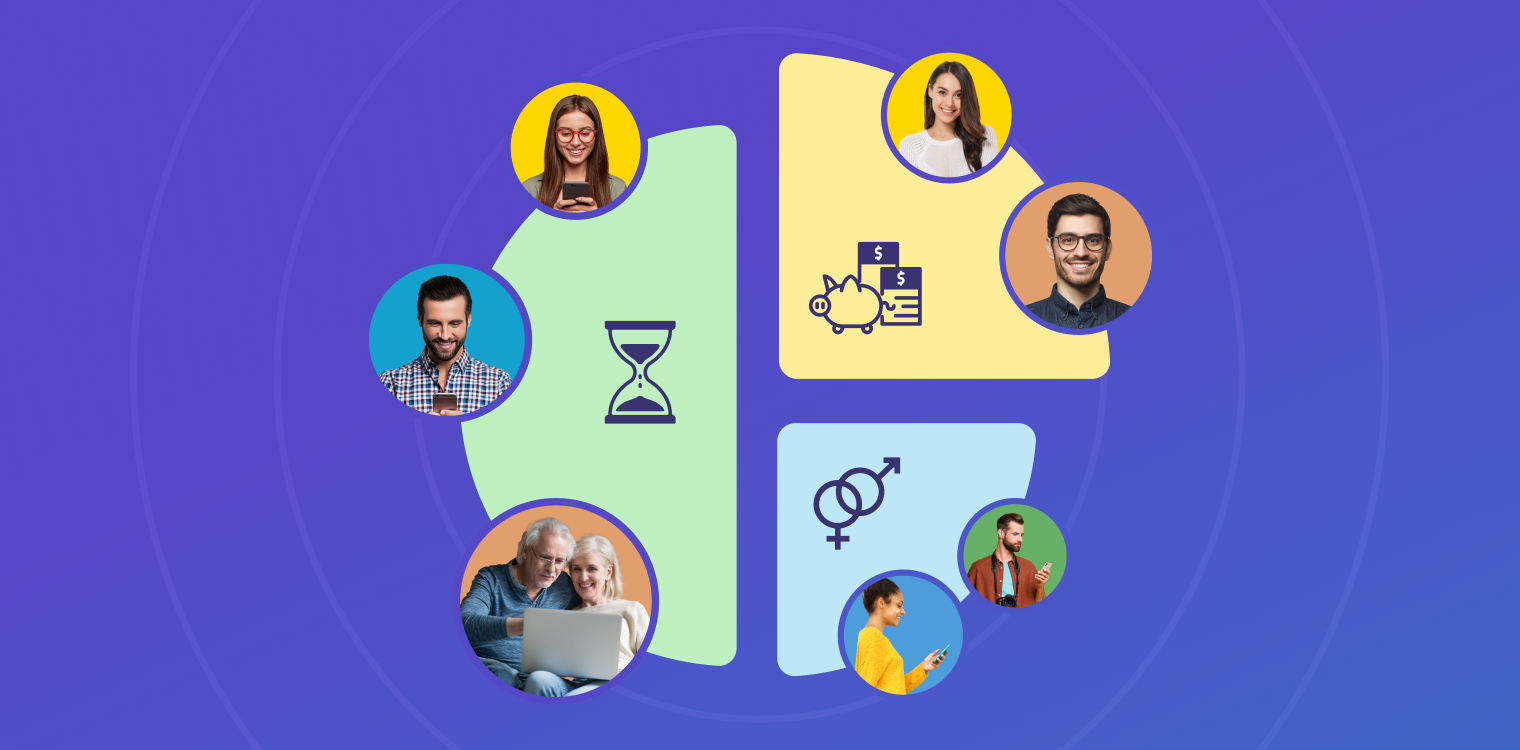
Life-Stage Segmentation
Customers can be divided into groups according to their age, family status, and other demographic characteristics that reflect distinct periods of life through the use of life stage segmentation. For BFSI (banking, financial services, and insurance) businesses, who must cater to their clients’ specific needs in order to remain competitive, this segmentation method is especially pertinent.
By analyzing customer data, BFSI companies can identify which life stage each customer belongs to, such as young adults, families with children, or retirees. They can then tailor their marketing efforts accordingly, promoting the specific products and services that are most relevant to each group.
For instance, a BFSI organization may offer credit-building goods, budgeting tools, and student debt refinancing choices to young adults. On the other side, the same business might offer retirement planning services, annuities, and investment advice to retirees.
Furthermore, life stage segmentation can assist BFSI businesses in locating untapped markets and expansion prospects. BFSI organizations can set themselves apart in the market and spur revenue growth by identifying consumer groups who are underserved by rivals and providing goods and services that cater to their particular requirements and preferences.
The Bank of America uses life stage segmentation to identify and target specific customer groups with personalized products and services. The company segments its customers into different life stages, such as young adults, families, and retirees, and tailors its marketing efforts accordingly.
For example, Bank of America may target young adults with credit cards that offer cash back rewards on everyday purchases, savings accounts with no monthly fees, and personal finance tools and apps to help manage their finances. On the other hand, the same company may target retirees with investment advice, retirement planning services, and specialized checking accounts with benefits such as waived fees.
Bank of America also segments its customers based on their financial goals and needs, such as homebuyers, small business owners, and high net worth individuals. The company offers unique products and services that cater to each customer group, such as mortgage loans, business banking services, and wealth management solutions.
By using life stage segmentation to tailor its marketing efforts to each customer group, Bank of America has been able to differentiate itself in the highly competitive BFSI industry and build a loyal customer base. The company’s targeted marketing campaigns, combined with its unique value proposition and personalized customer experience, have driven revenue growth and market share, ultimately establishing Bank of America as a leading BFSI company in the United States.
By offering personalized products and services that meet the specific needs and preferences of each customer group, Bank of America has been able to improve customer satisfaction and retention. This, in turn, has led to increased customer loyalty and advocacy, driving further revenue growth and market share.
Risk-Based Segmentation
BFSI companies can segment customers based on their risk appetites and recommend the right products to them. This segmentation approach is known as risk-based segmentation.
Risk-based segmentation is a method of dividing customers into groups based on their risk appetites and tolerance levels. By analyzing customer data, BFSI companies can identify which customers are more risk-averse and which ones are more risk-tolerant. They can then tailor their product recommendations and marketing efforts accordingly.
BFSI companies use various methods to assess risk tolerance in their customers. Some of the commonly used methods are:
- Risk tolerance questionnaire: A risk tolerance questionnaire is a survey that asks customers about their investment goals, financial situation, investment time horizon, and risk tolerance. Based on their responses, BFSI companies can determine the appropriate investment products for each customer.
- Behavioral finance analysis: Behavioral finance analysis uses data and analytics to understand how customers make financial decisions and what factors influence their risk tolerance. This information is used to develop personalized investment recommendations that align with each customer’s risk appetite and investment goals.
- Investment experience: BFSI companies may also consider a customer’s investment experience when assessing their risk tolerance. Customers who have more experience with investing and are comfortable with taking risks may be recommended higher-risk investment products, while customers who are less experienced may be recommended lower-risk products.
- Demographic factors: BFSI companies may also consider demographic factors, such as age, income, and education, when assessing a customer’s risk tolerance. For example, younger customers may be more willing to take risks than older customers, while customers with higher incomes may have a higher risk tolerance.
Assessing risk tolerance in customers is an important part of the financial planning and investment process for BFSI companies. By understanding each customer’s risk tolerance and investment goals, companies can provide personalized investment recommendations that align with their customers’ needs and preferences, ultimately driving customer satisfaction and loyalty.
Fidelity Investments is a financial services company that uses risk-based segmentation to identify and target specific customer groups with personalized investment recommendations. The company segments its customers based on their risk tolerance and investment goals, using a combination of behavioral finance analysis and investment experience data.
For example, Fidelity Investments may recommend low-risk investment products, such as bonds or mutual funds, to customers who are risk-averse. On the other hand, the same company may recommend higher-risk investment products, such as stocks or options, to customers who are more risk-tolerant.
Fidelity Investments also segments its customers based on their financial goals and needs, such as retirement planning, college savings, or estate planning. The company offers unique investment products and services that cater to each customer group, such as retirement planning tools and investment advice.
By using risk-based segmentation to tailor its marketing efforts and investment recommendations to each customer group, Fidelity Investments has been able to differentiate itself in the highly competitive financial services industry and build a loyal customer base. The company’s targeted marketing campaigns, combined with its unique value proposition and personalized customer experience, have driven revenue growth and market share, ultimately establishing Fidelity Investments as a leading financial services company in the United States.
What’s more, Fidelity Investments has improved customer satisfaction and retention by providing personalized investment recommendations that meet the specific needs and preferences of each customer group. As a result, customer loyalty and advocacy have increased, resulting in additional revenue growth and market share.
Customer Segmentation For Media and Entertainment

Content Preference Segmentation
Content preference segmentation is a technique for categorizing customers based on their preferences for various types of media content, such as TV shows, films, music, or books. This segmentation strategy is especially relevant for media and entertainment companies, which must provide customized content to their customers in order to have a competitive edge.
Media and entertainment companies can identify which types of content each customer prefers by analyzing customer data and tailoring their marketing efforts accordingly. A customer who enjoys watching action films, for example, may be more likely to respond to marketing campaigns promoting similar content.
Furthermore, content preference segmentation can assist media and entertainment companies in identifying untapped markets and growth opportunities. Media and entertainment companies can differentiate themselves in the market and drive revenue growth by identifying customer groups that are underserved by competitors and providing content that meets their specific needs and preferences.
But how do media and entertainment companies perform targeted marketing with content preference segmentation? They can use a range of strategies, such as:
- Recommendation systems: Recommendation systems use customer data and algorithms to suggest content that customers are likely to enjoy based on their past viewing or listening history. This helps media and entertainment companies offer personalized recommendations to each customer, increasing the likelihood of engagement and retention. We here at WebEngage leverage advanced technologies like the recommendations and catalog engine that brings precision customization right into your hands.
- Content curation: Media and entertainment companies can curate content collections based on customer preferences. For example, a music streaming platform may create a playlist of songs that are similar to a customer’s favorite artist.
Media and entertainment companies can differentiate themselves in a highly competitive industry and build a loyal customer base by using content preference segmentation to tailor their marketing efforts and content offerings to each customer group. Besides this, by providing personalized content recommendations based on customer preferences and interests, businesses can improve customer satisfaction and retention, resulting in increased revenue and market share.
Netflix is a streaming platform that has mastered the art of content preference segmentation. The company uses a range of strategies to identify which types of content each customer prefers and tailor its recommendations and marketing efforts accordingly.
For example, Netflix uses a sophisticated algorithm that analyzes customer data, such as viewing history, search queries, and ratings, to suggest movies and TV shows that customers are likely to enjoy. The company also uses content curation to create collections of movies and TV shows based on specific themes, genres, or moods, such as “Boundary-Pushing Filmmakers” or “Dark Thrillers.”
Netflix uses targeted advertising to reach customers who have expressed interest in specific types of content. For example, if a customer has watched several action movies on the platform, Netflix may show them an ad for a new action movie that is coming soon.
By using content preference segmentation to tailor its marketing efforts and content offerings to each customer group, Netflix has become a household name in the streaming industry. The company’s targeted marketing campaigns, combined with its unique value proposition and personalized customer experience, have driven revenue growth and market share, ultimately establishing Netflix as a leading media and entertainment company.
Platform Usage Segmentation
Platform usage segmentation is a valuable customer segmentation approach for media and entertainment companies. By dividing customers into groups based on how they use a platform, companies can tailor their marketing efforts to each group and identify trends and patterns in customer behavior.
A streaming platform that offers both movies and TV shows may use platform usage segmentation to identify customers who primarily use the platform for one type of content over the other. This information can help the platform offer personalized recommendations for new releases to each customer group, driving engagement and retention.
Besides, platform usage segmentation can help media and entertainment companies identify which parts of their platform are most popular among specific customer groups. By analyzing usage data, companies can develop targeted campaigns that promote content and features that resonate with each group, driving further engagement and retention.
Altogether, platform usage segmentation is a powerful tool for media and entertainment companies looking to optimize their marketing strategy and improve customer engagement. By identifying patterns in customer platform usage and tailoring their marketing efforts and content offerings accordingly, businesses can create targeted campaigns that resonate with each group, ultimately driving revenue growth and improving customer satisfaction.
One example of a media and entertainment company that uses platform usage segmentation to drive targeted marketing is Spotify. The music streaming platform divides its customers into groups based on the type of music they listen to, the devices they use to access the platform, and their level of engagement with the platform.
Spotify uses platform usage segmentation to identify customers who primarily use the platform on their mobile devices, and targets them with ads for mobile-only features, such as offline listening. Additionally, the platform uses customer data to create personalized playlists and recommendations based on each customer’s listening history and preferences.
By using platform usage segmentation to identify customer preferences and behavior, Spotify can create targeted marketing campaigns that offer a personalized customer experience. This approach has been successful for the platform, making it one of the most popular music streaming services available today.
Customer Segmentation For EdTech
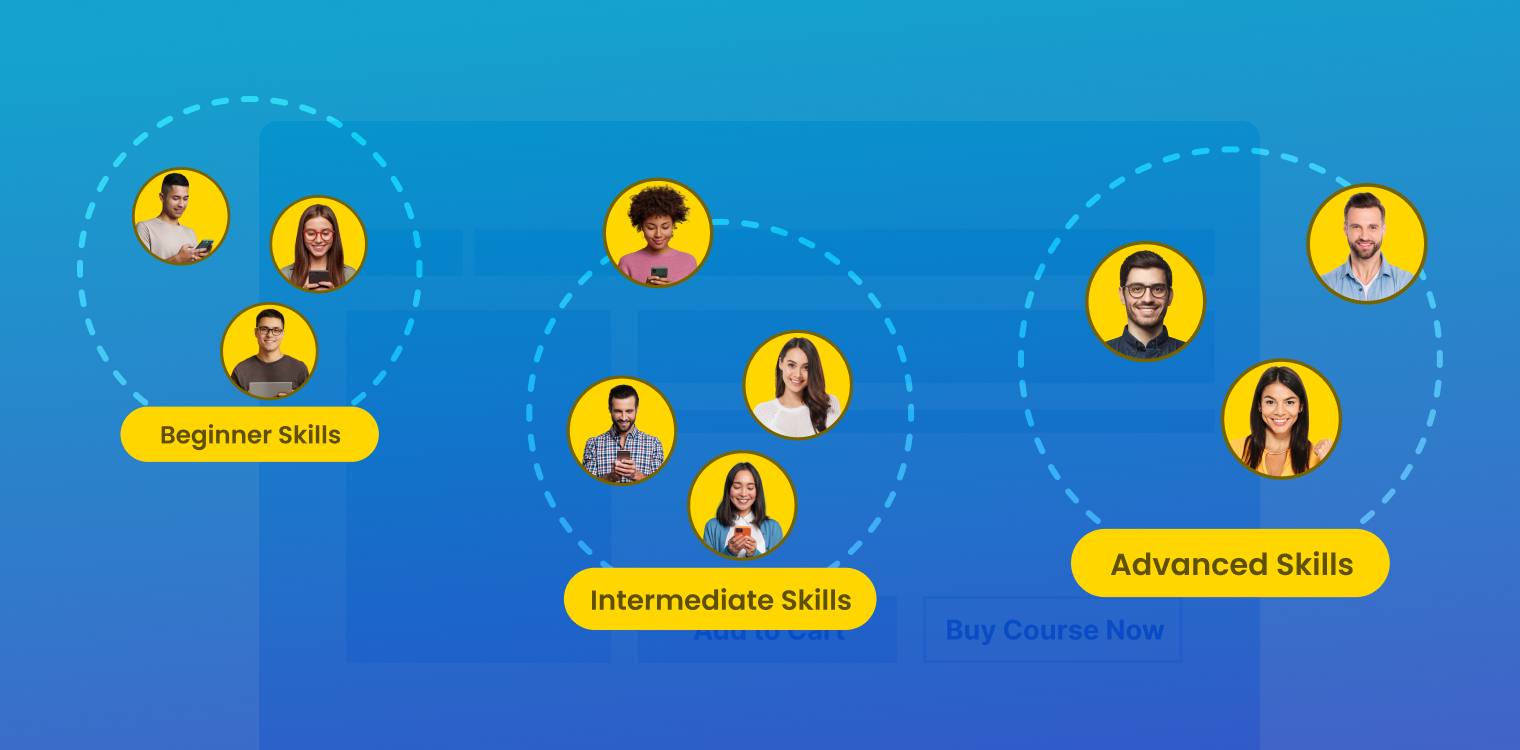
Learning Style Segmentation
EdTech companies can use learning style segmentation to divide their customer base into groups based on how each individual prefers to learn. By analyzing data on customer learning styles and preferences, EdTech companies can create targeted marketing campaigns that resonate with each group.
For example, some customers may prefer to learn by reading, while others may prefer to learn by watching videos or engaging in interactive simulations. By identifying these preferences and developing content that caters to each group, EdTech companies can improve customer engagement and satisfaction.
Learning style segmentation can help EdTech companies identify gaps in their content offerings and develop new products that cater to specific learning styles. For example, if a company identifies a group of customers who prefer interactive learning experiences, they may develop new simulations or gamified learning experiences to meet their needs.
Ultimately, learning style segmentation is a powerful tool for EdTech companies looking to optimize their marketing strategy and improve customer engagement. By identifying patterns in customer learning styles and preferences and tailoring their marketing efforts and content offerings accordingly, businesses can create targeted campaigns that resonate with each group, ultimately driving revenue growth and improving customer satisfaction.
Coursera, an online learning platform that offers courses and graduate programs from top universities and institutions around the world, is one example of an EdTech company that uses learning style segmentation for targeted marketing.
Coursera uses data on customer learning styles and preferences to personalize the learning experience for each customer. For example, the platform offers a range of course formats, including video lectures, interactive simulations, and written assignments, to cater to different learning styles.
Additionally, Coursera uses learning style segmentation to recommend courses and programs to each customer based on their individual preferences and goals. By analyzing data on customer course history, interests, and performance, Coursera can recommend new courses and programs that are tailored to each individual’s learning style and goals.
To sum up, by using learning style segmentation, Coursera is able to offer a personalized learning experience that resonates with each customer, driving engagement and retention on the platform.
Skill Level Segmentation
EdTech companies can use skill level segmentation to divide their customer base into groups based on their current skill level or proficiency in a particular subject or topic. By analyzing data on customer skills and performance, EdTech companies can develop targeted marketing campaigns that offer content and resources that are appropriate for each skill level.
For example, an EdTech company that offers coding courses may divide their customers into beginner, intermediate, and advanced groups based on their coding proficiency. They can then tailor their marketing efforts to each group, offering beginner-level courses to those who are new to coding, intermediate-level courses to those who have some coding experience, and advanced-level courses to those who are more proficient.
Skill level segmentation can help EdTech companies identify gaps in their content offerings and develop new products that cater to specific skill levels. For example, if a company identifies a group of customers who are struggling with a particular concept or skill, they may develop new resources or support materials to help these customers improve their skills.
Duolingo uses data on customer language proficiency and performance to personalize the learning experience for each customer. The platform divides its customers into groups based on their current level of proficiency in a particular language, such as beginner, intermediate, or advanced.
By doing so, Duolingo can then offer content and resources that are appropriate for each skill level. For example, the platform may offer beginner-level courses that focus on basic vocabulary and grammar for customers who are new to a particular language, while offering more advanced courses that focus on complex grammar and conversation skills for customers who are more proficient.
On the whole, Duolingo is able to provide a personalized learning experience that resonates with each customer, driving engagement and retention on the platform.
Conclusion
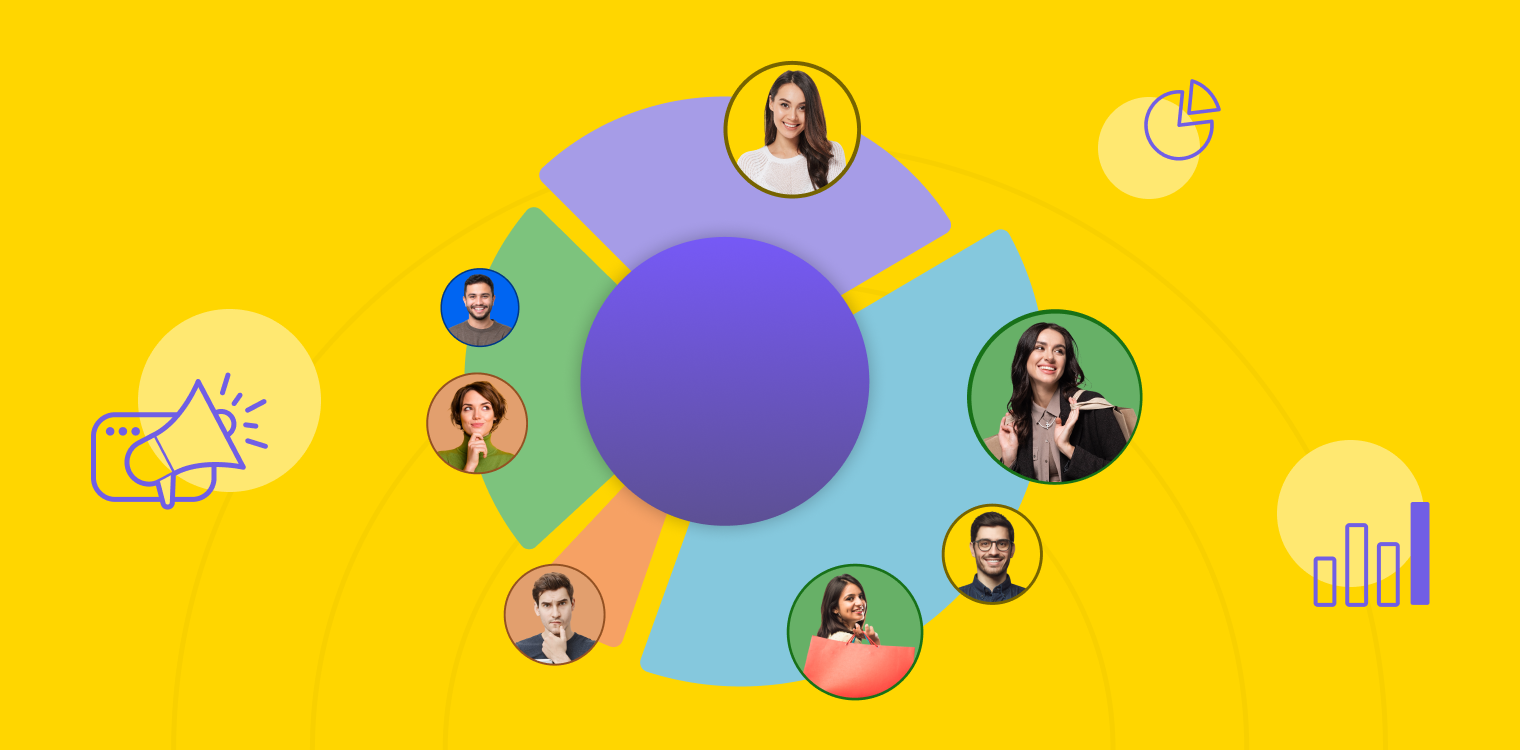
In conclusion, customer segmentation is a critical tool for businesses looking to improve their targeted marketing efforts. By dividing their customer base into groups based on shared characteristics, businesses can develop tailored marketing campaigns that resonate with each group. Throughout this blog, we’ve explored 12 different customer segmentation methods, ranging from purchase frequency segmentation to learning style segmentation. Each of these methods offers unique insights into customer behavior and preferences, enabling businesses to create personalized campaigns that drive engagement and retention.
The importance of customer segmentation cannot be overstated. By understanding their customers on a deeper level, businesses can create marketing campaigns that are more relevant, engaging, and effective. If you’re looking to simplify your targeted marketing process and make it more effective with customer segmentation, consider using WebEngage. Our platform offers a range of powerful customer segmentation and engagement tools, enabling you to create personalized campaigns that resonate with each customer group.
So, if you’re not already using customer segmentation in your marketing efforts, now is the time to start. Identify the segmentation methods that are most relevant to your business and begin collecting data on your customers. With the right approach, you can create targeted campaigns that resonate with each group, driving revenue growth and improving customer satisfaction.
Take a demo with WebEngage today to enhance your customer segmentation powers.







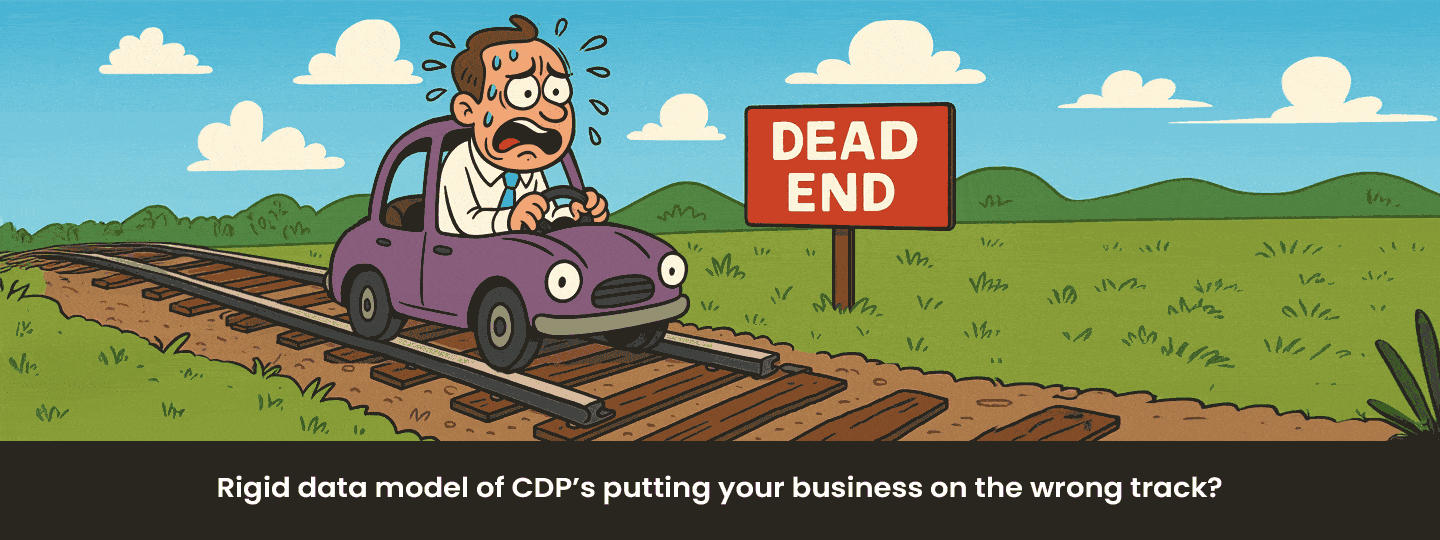
 Avlesh Singh
Avlesh Singh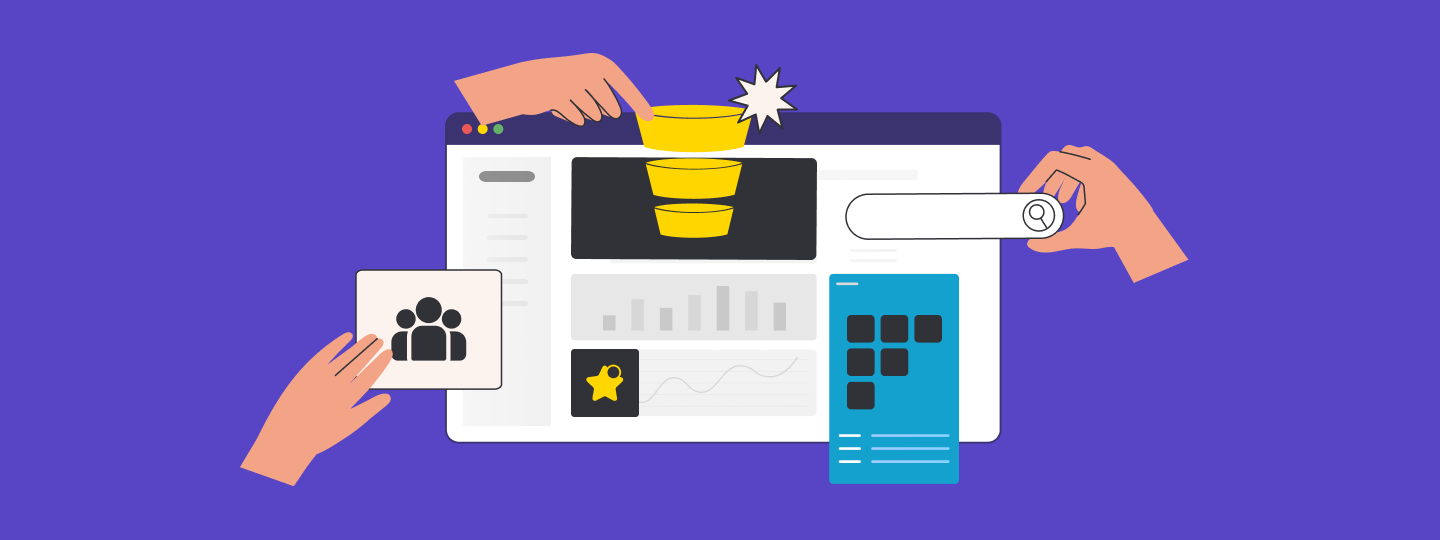
 Prakhya Nair
Prakhya Nair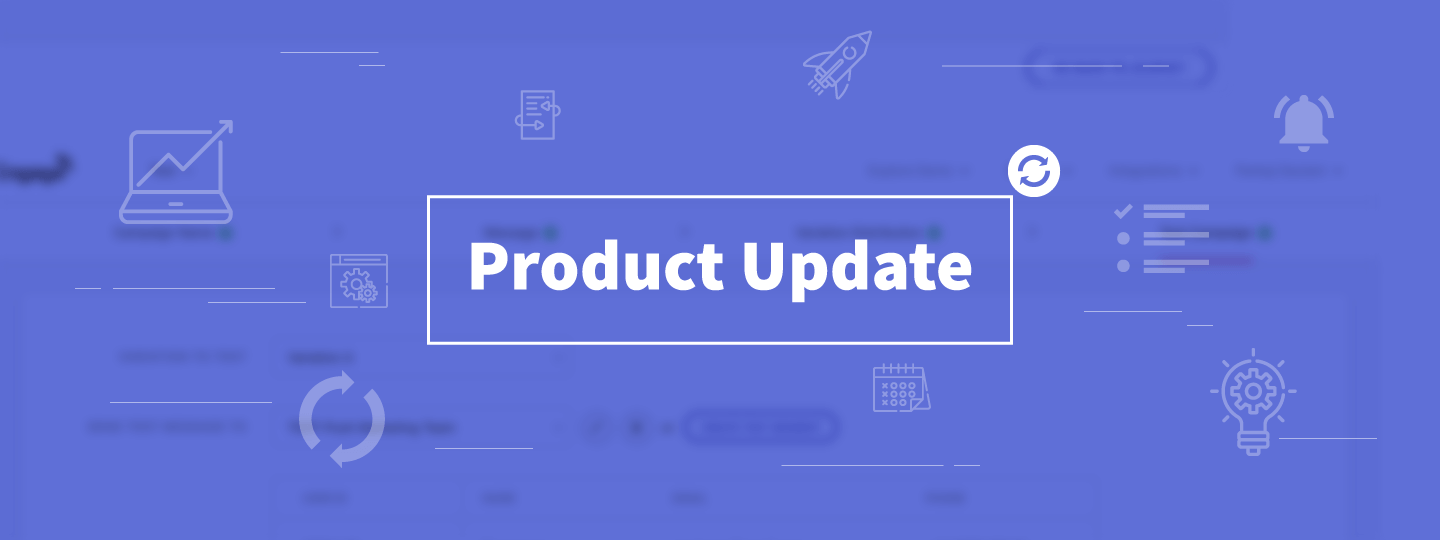
 Harshita Lal
Harshita Lal